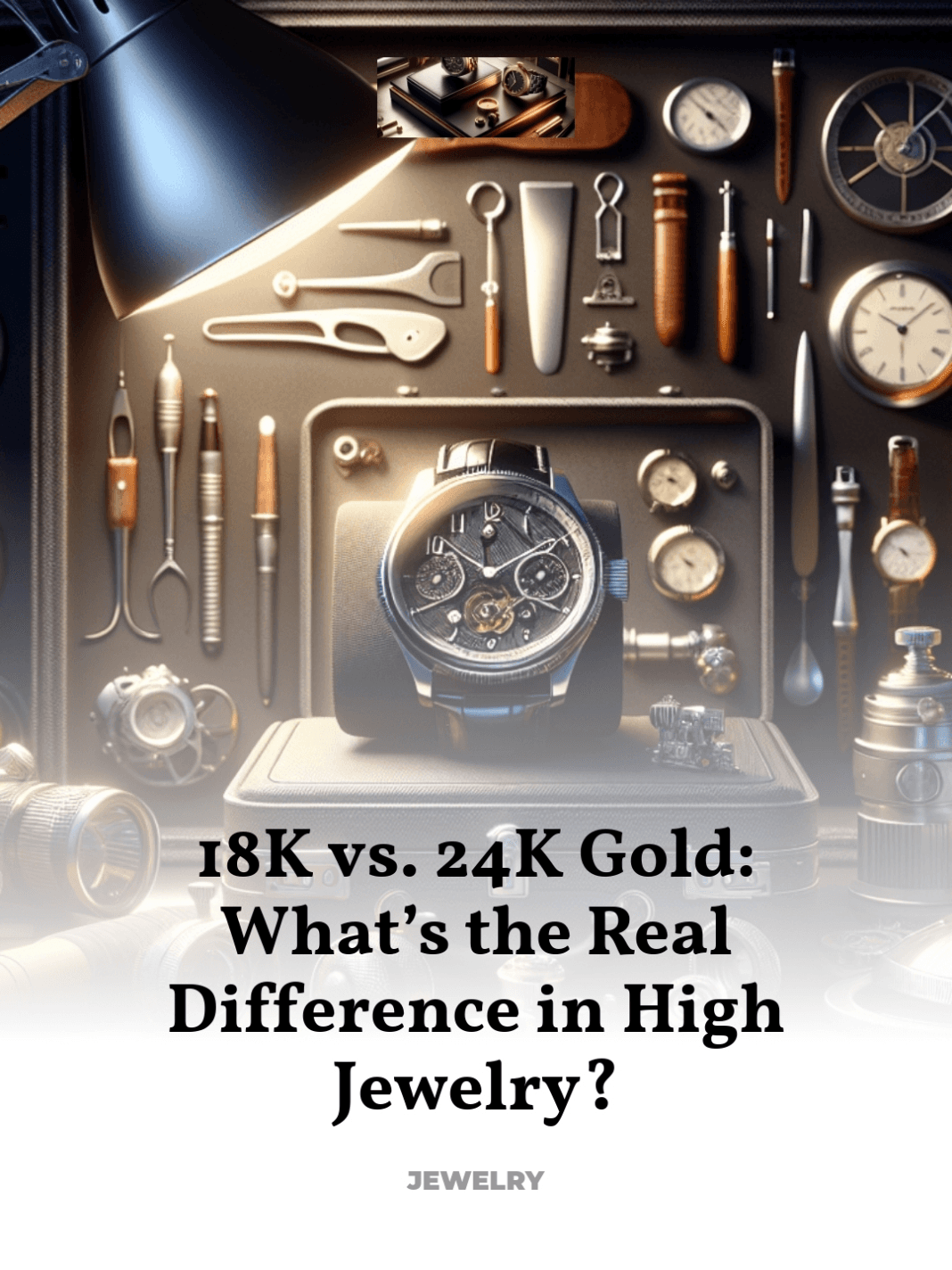How purity impacts the durability, color, and value of gold pieces
The allure of gold in high jewelry cannot be overstated, with its rich history and profound cultural significance shaping its enduring appeal. Whether it’s the subtle elegance of 18K gold or the pure radiance of 24K gold, each type offers unique qualities that cater to different tastes and purposes in the realm of luxury jewelry.
- Purity and Composition: The Basics of 18K and 24K Gold
- Durability and Practicality in Everyday Wear
- Color and Aesthetics: Visual Differences and Preferences
- Cultural Significance and Historical Context
- Value and Desirability in the Luxury Market
- Reflecting on the Artistic and Cultural Impacts of Gold Jewelry
Purity and Composition: The Basics of 18K and 24K Gold
Understanding the fundamental differences between 18K and 24K gold is essential for any aficionado of high jewelry. Pure gold, known chemically as Au, is characterized by its malleability and distinctive yellow color. The ‘K’ in 18K and 24K stands for karat, which measures the purity of the gold, with 24K being 100 percent pure.
18K gold consists of 75% gold mixed with 25% other metals like copper, silver, or zinc. This alloying process enhances its strength and durability, making it more suitable for daily wear jewelry. The additional metals can also alter the color, leading to variations such as white or rose gold, depending on the specific mix.
24K gold, being pure, retains the deep yellow luster that is often associated with gold. However, its purity also means it is much softer and more susceptible to scratching and deformation. This characteristic generally makes 24K gold less ideal for jewelry that must endure regular wear and tear, such as rings and bracelets.
Durability and Practicality in Everyday Wear
The choice between 18K and 24K gold often comes down to a balance between luxury and longevity. 18K gold, with its incorporation of harder metals, stands up better to the rigors of daily use. This makes it an excellent choice for engagement rings, bracelets, and other pieces of jewelry that are worn frequently.
24K gold, while revered for its purity and beautiful sheen, is more prone to bending and scratching. This makes it less practical for pieces intended for everyday wear. However, it is highly sought after in markets and cultures where high purity gold is prized, often used in ceremonial or decorative items that are not subjected to frequent handling.
Color and Aesthetics: Visual Differences and Preferences
The color of gold jewelry is directly influenced by its purity. 24K gold has a warm, intense yellow color that is very rarely found in lower karat numbers. This vibrant hue is often associated with wealth and prosperity, making it a popular choice in cultures that place a high value on pure gold.
18K gold, due to its alloy composition, can be found in a variety of colors. While it can also have a rich yellow color, albeit slightly less intense than 24K, it is also available in the elegant hues of white and rose gold. These colors are achieved by varying the combination of alloying metals, such as increasing the proportion of silver or copper.
Cultural Significance and Historical Context
Gold has been revered throughout history, not just for its beauty but also for its cultural significance. In many societies, gold jewelry is more than a decorative item; it is a symbol of status, power, and divine grace. The preference for 18K or 24K gold can vary significantly between different cultures and historical periods.
In many Western countries, 18K gold is often preferred for its practicality and subtle elegance. However, in parts of Asia and the Middle East, 24K gold is more prevalent, reflecting a cultural emphasis on purity and tradition. This cultural preference extends to the giving of 24K gold jewelry in weddings and festivals, signifying good fortune and blessings.
Value and Desirability in the Luxury Market
While both 18K and 24K gold are highly valued in the luxury market, their appeal can depend on various factors including market trends, cultural background, and personal preference. 24K gold is often more expensive per gram due to its higher gold content, but 18K gold jewelry can be equally prized for its craftsmanship and design.
The choice between 18K and 24K gold ultimately depends on the buyer’s priorities—whether they value purity and traditional appeal or durability and modern aesthetics. High jewelry brands often offer collections in both types of gold, allowing connoisseurs to select pieces that best fit their lifestyle and tastes.
Reflecting on the Artistic and Cultural Impacts of Gold Jewelry
The debate between 18K and 24K gold in high jewelry encapsulates a broader discussion about what luxury means in different contexts. Whether one prefers the pure brilliance of 24K gold or the versatile elegance of 18K gold, both types of gold have their own unique stories to tell and roles to play in the world of high jewelry.
For further exploration into the fascinating world of gold jewelry, esteemed sources such as the Metropolitan Museum of Art’s Gold Collection offer insights into the historical and artistic significance of these precious metals.



